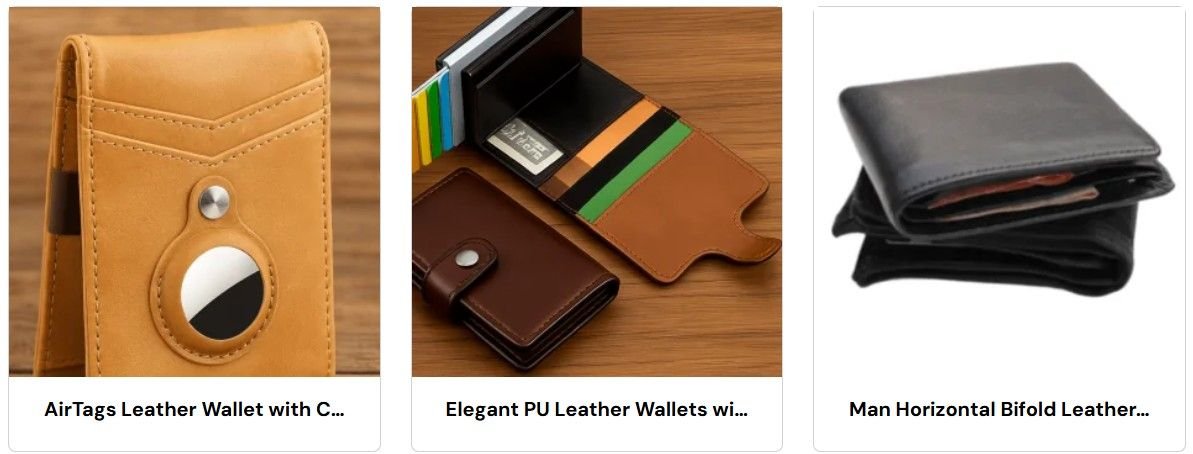
In the world of timeless accessories, few items rival the appeal and utility of a well-made leather wallet. Whether it’s the classic bi-fold, a slim cardholder, or a rugged trifold, the charm lies not just in the product—but in the story behind it. At the heart of every luxury wallet is an intricate process of leather wallet manufacturing that blends tradition, precision, and a passion for craftsmanship.
From Hide to Heirloom: Selecting the Right Leather
The journey begins with choosing the right kind of leather. Full-grain leather, known for its durability and natural texture, is the most prized material. It’s sourced from the top layer of the hide and retains the unique markings that give each wallet character. Top-grain leather is another favorite, slightly more processed for a smoother finish, while genuine leather (despite the name) ranks lower in quality.
Tanneries play a critical role in preparing these hides. Using either vegetable tanning—an eco-friendly, centuries-old method—or chrome tanning for speed and flexibility, the raw material is transformed into supple, workable leather sheets. This tanning process affects everything from texture to longevity and is a defining step in the leather wallet manufacturing workflow.
Designing with Purpose
Once the leather is ready, skilled designers sketch out the wallet’s blueprint. This phase balances aesthetic and function. A wallet should be sleek enough to fit into pockets yet spacious enough to hold cards, cash, and IDs without bulging. Prototypes are developed and tested repeatedly to ensure flawless usability.
At this stage, personalization can be introduced. From monograms to custom linings, embossing, and RFID-blocking materials, brands incorporate elements that reflect the buyer’s taste and lifestyle.
The Craft of Construction
Next comes the cutting stage—done either by hand or with precision die-cut machines. This step requires accuracy because any inconsistency can affect the final shape. Each piece—outer shell, pockets, dividers, linings—is carefully cut and arranged.
Then comes one of the most delicate parts of leather wallet manufacturing: stitching. Many luxury brands still use saddle stitching—a hand-sewn technique known for strength and beauty. Two needles pass through each hole in opposite directions, creating a symmetrical, durable seam that machines can’t replicate. While slower, this method ensures that even if one stitch breaks, the rest remain intact.
In contrast, some wallets are machine-stitched, which is faster and ideal for large-scale production. High-end manufacturers often combine both methods for efficiency without compromising quality.
Edges are then burnished—smoothed and polished—sometimes painted to match or contrast the leather. Linings, often made of leather or fine fabric, are inserted and glued or stitched to keep everything in place.
Quality Control & Finishing Touches
Before a wallet is boxed and shipped, it undergoes a thorough quality inspection. Artisans check for stitching irregularities, leather blemishes, and alignment issues. Only wallets that meet high standards make it to the final stage.
Finally, finishing touches like brand logos, embossed patterns, or metallic snaps and zippers are added. Each detail enhances the wallet’s character and luxury appeal.
Sustainability and Modern Shifts
With growing environmental awareness, many manufacturers are now adopting sustainable practices in leather wallet manufacturing. Vegetable-tanned leather, recycled materials, water-saving technologies, and ethical sourcing have become more common. Consumers today are not just looking for quality—they want products that align with their values.
Some modern brands are even exploring plant-based leathers made from mushrooms, cactus, or pineapple fibers, giving rise to a new category of vegan-friendly wallets. While traditionalists still favor classic leather, innovation in this space is rapidly changing the landscape.
Why Craftsmanship Matters
At a glance, a wallet might seem like a simple item. But once you understand what goes into making one, from leather selection to hand stitching, you begin to see it as a symbol of artistry. A well-crafted wallet doesn’t just hold essentials—it tells a story of heritage, detail, and the hands that shaped it.
So, the next time you purchase or gift a wallet, remember that behind every seam and fold is a process steeped in tradition and skill. Whether you’re drawn to minimalist design or vintage appeal, it’s the craftsmanship of leather wallet manufacturing that turns a basic accessory into a lifelong companion.

